How to Sustain Growth in the Timber Industry
- September 17, 2024
- 0 comment
The timber industry plays a crucial role in the global economy, providing materials for construction, furniture, and countless other sectors. However, as global demand for timber rises, the industry’s impact on deforestation, biodiversity, and climate change has drawn considerable scrutiny.

To ensure that the timber industry remains viable for future generations, sustainability must be at the heart of its operations. Sustainable forestry practices are not only essential for protecting the environment, but they also enable long-term economic growth and job creation within the sector.
Table of Contents:
- Economic Growth through Sustainable Practices
- The Role of Policy and Regulation
- Protecting Biodiversity and Ecosystems
- The Importance of Community Involvement
- Challenges Facing the Timber Industry
Understanding About Sustainability in the Timber Industry
Sustainability in the timber industry means harvesting wood without compromising the health of the forest ecosystems. It includes ensuring that forests regenerate, biodiversity is protected, and social and economic benefits are distributed equitably. Key elements of sustainable timber production include:
- Forest Management Certification: Programs like the Forest Stewardship Council (FSC) and Programme for the Endorsement of Forest Certification (PEFC) set global standards for responsible forest management, ensuring that timber is harvested in a way that protects biodiversity and promotes forest regeneration.
- Reforestation and Afforestation: Timber companies should adopt reforestation (replanting trees in harvested areas) and afforestation (planting trees in non-forested areas) to ensure forest cover remains intact. These practices help maintain the ecological balance and provide a renewable source of timber.
- Minimizing Waste: Utilizing the entire tree—branches, bark, and other parts—for different purposes can reduce waste and improve efficiency. Biomass energy from waste products is one example of how the industry can create value while reducing its environmental footprint.
Economic Growth through Sustainable Practices
The timber industry is a significant driver of economic development, particularly in rural areas where forest resources are abundant. Sustainability does not need to come at the cost of economic growth; in fact, it can support long-term industry prosperity. Here’s how:

- Creating Green Jobs: Sustainable forestry can lead to the creation of new green jobs in sectors like forest management, environmental monitoring, and conservation. By promoting eco-friendly practices, the industry can also attract socially conscious consumers, boosting demand for certified sustainable wood products.
- Promoting Technological Innovations: Advances in technology are enabling more efficient timber harvesting and processing. For example, drones and satellite imaging help monitor forest health, while new machinery can reduce the environmental damage caused by logging operations. Innovations like engineered wood products, which use less raw material, also help the industry meet demand without over-exploiting forests.
- Market Differentiation: Sustainable certification not only provides a competitive advantage in markets where eco-conscious consumers are growing but also opens up new markets. Many governments and large corporations now prefer or mandate the use of sustainably sourced timber for construction and other purposes.
The Role of Policy and Regulation
Government policies play an essential role in ensuring the timber industry’s sustainable growth. Strong regulations, enforcement, and incentives can encourage companies to adopt sustainable practices. Key policy measures include:

- Strict Logging Regulations: Governments need to enforce limits on logging operations, preventing illegal logging, and setting quotas that allow forests to regenerate naturally. This includes supporting the development of sustainably managed plantations that provide a stable timber supply without depleting natural forests.
- Incentives for Sustainable Practices: Subsidies, tax incentives, or grants can motivate timber companies to invest in sustainable forest management technologies. Public-private partnerships can also promote investment in afforestation and reforestation projects.
- Carbon Sequestration Credits: Forests play a critical role in capturing carbon dioxide and mitigating climate change. By allowing timber companies to earn carbon credits for maintaining or restoring forests, governments can create a financial incentive for sustainable practices.
Protecting Biodiversity and Ecosystems
Forests are home to around 80% of the world’s terrestrial species, and unsustainable logging can lead to biodiversity loss and ecosystem degradation. Sustainable timber production must prioritize protecting the habitat of wildlife, maintaining the health of watersheds, and ensuring that logging does not disrupt the balance of ecosystems.

- Selective Logging: One approach to minimizing ecological disruption is selective logging, where only certain trees are harvested. This allows the forest to continue providing habitat for wildlife and preserving the structure of the ecosystem.
- Conservation Set-Asides: In many sustainable forestry models, certain areas of a forest are set aside for conservation and not subjected to any logging activity. These protected areas serve as biodiversity hotspots and play a key role in maintaining the ecological balance of the region.
- Integrated Landscape Management: Timber production should be part of a broader landscape management strategy that balances the needs of the timber industry with those of agriculture, conservation, and local communities. This holistic approach ensures that forests continue to provide ecosystem services such as water purification, soil stabilization, and climate regulation.
The Importance of Community Involvement
For the timber industry to grow sustainably, it must engage and empower local communities. Many forests are located near indigenous or rural communities that depend on them for their livelihoods. Timber companies have a responsibility to ensure that these communities benefit from sustainable forestry.

| Community Involvement Aspect | Impact | Economic Benefit | Social Benefit |
|---|---|---|---|
| Local Employment | Job creation, local income generation | Increases household income by 15-20% | Strengthens local economy and reduces poverty |
| Indigenous Knowledge Utilization | Improved forest management and biodiversity | Reduces reforestation costs | Protects cultural heritage, enhances sustainability |
| Profit Sharing & Fair Wages | Fair compensation leads to economic stability | Boosts local economy by 10-15% | Encourages long-term community support |
- Fair Compensation and Employment: Timber companies should provide fair wages and safe working conditions for their employees. This includes hiring locally, offering training programs in sustainable forestry, and ensuring that workers have access to benefits such as healthcare and education.
- Empowering Indigenous Communities: Indigenous peoples often have a deep understanding of forest ecosystems, and their involvement in forest management can lead to better outcomes for both the industry and the environment. Companies should work with indigenous groups to ensure that their land rights are respected, and they share in the economic benefits of timber production.
- Promoting Education and Awareness: Public awareness campaigns can highlight the importance of buying sustainably sourced timber, while education programs in schools can teach the next generation about the benefits of forest conservation.
Challenges Facing the Timber Industry
While sustainable practices are becoming more widespread, the timber industry still faces several challenges. Addressing these issues is key to the industry’s long-term success:

| Challenge | Impact | Potential Cost | Mitigation Strategy |
|---|---|---|---|
| Illegal Logging | Deforestation, loss of biodiversity | Loss of up to $15B globally/year | Stronger law enforcement, certified supply |
| Climate Change | Increased forest fires, pests, and droughts | Damage to forests, replanting costs | Adaptation strategies, resilient species |
| Market Fluctuations | Unstable timber prices, economic instability | Decreased revenue for producers | Diversify income, long-term contracts |
| Technological Gaps | Delays in sustainable practices implementation | High initial investment costs | Investment in innovations, government support |
- Illegal Logging: Illegal logging remains a significant problem, particularly in developing countries. It undermines sustainable efforts, as unregulated harvesting leads to deforestation and biodiversity loss. Stronger enforcement and international cooperation are needed to combat this issue.
- Climate Change: The timber industry is both affected by and contributes to climate change. Rising temperatures and changing precipitation patterns can disrupt forest growth and increase the frequency of forest fires. The industry must adopt adaptive management practices to cope with these changes while minimizing its own carbon footprint.
- Market Fluctuations: The timber industry is sensitive to global market conditions, and price fluctuations can make it difficult for companies to invest in sustainable practices. Developing resilient business models and diversifying revenue streams, such as investing in eco-tourism or non-timber forest products, can help mitigate this risk.
Final Conclusion
The timber industry can continue to grow and thrive, but only if sustainability is placed at the core of its operations. By adopting sustainable forestry practices, embracing technological innovations, and working closely with policymakers and local communities, the industry can protect the world’s forests while also contributing to economic development. The path forward lies in balancing the need for timber with the need to protect the environment—a challenge that requires cooperation from all industry stakeholders.
Frequently Asked Questions (FAQs)
- What is sustainable forestry?
Sustainable forestry involves managing forest resources to meet present needs without compromising future generations’ ability to meet theirs. It emphasizes forest regeneration, biodiversity, and responsible harvesting practices. - Why is sustainability important in the timber industry?
Sustainability ensures the timber industry continues thriving while protecting forest ecosystems, reducing deforestation, and mitigating climate change. - What is the role of forest certification in sustainability?
Certifications like FSC and PEFC ensure timber is sourced from responsibly managed forests, guaranteeing ecological protection and fair labor practices. - How does reforestation support the timber industry?
Reforestation replaces trees harvested for timber, ensuring a continuous supply while maintaining forest ecosystems and biodiversity. - What technological innovations are advancing sustainability in the timber industry?
Innovations such as drones for monitoring forests, precision harvesting equipment, and engineered wood products help reduce environmental impact and increase efficiency. - What are the economic benefits of sustainable timber practices?
Sustainable practices create green jobs, open new markets for eco-conscious consumers, and encourage innovation, leading to long-term industry growth. - How do timber companies reduce waste?
Companies use the entire tree for various products, including biomass energy, which helps reduce waste and improve efficiency. - How can illegal logging be controlled?
Stronger enforcement of regulations, international cooperation, and better monitoring systems can help combat illegal logging and protect forests. - What role do local communities play in sustainable forestry?
Local communities are crucial for sustainable forestry, providing labor, indigenous knowledge, and ensuring the industry benefits rural economies. - How does climate change impact the timber industry?
Climate change affects forest health, increasing the risk of fires and pests, but sustainable forest management can help mitigate these impacts through carbon sequestration and adaptive practices.
We hope this guide has offered clear insights into sustainable timber industry growth and the importance of responsible forestry practices. Have suggestions or experiences related to sustainability in this field? Share your thoughts below to inspire others. Your input can help promote eco-friendly solutions and long-term industry success. Don’t forget to share this guide with those interested in balancing timber production with environmental preservation for a greener future.

James Wilson
Forestry AuthorJames Wilson has over 15 years of experience in forestry economics, specializing in sustainable practices, investment opportunities, and financial management. He has contributed to notable publications like "Forestry Today" and "EcoFinance Journal" and is known for providing practical and insightful advice. With a degree in Environmental Economics, James stays updated through continuous learning and active participation in industry discussions. Outside work, he enjoys hiking and nature photography, bringing a well-rounded perspective to his professional role.

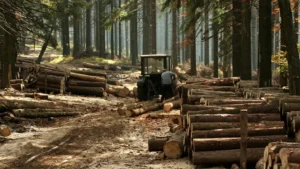
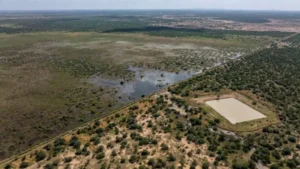




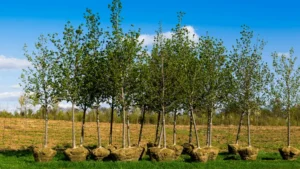

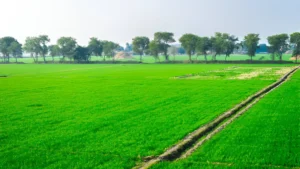


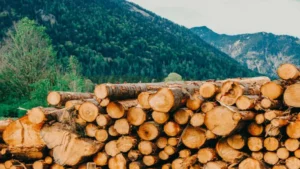
Leave your comment